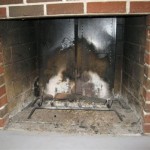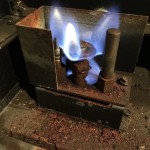Antique Fireplace Mantel Ideas: A Comprehensive Guide to Timeless Elegance
The fireplace, historically the heart of the home, retains its symbolic significance even in contemporary residences. An antique fireplace mantel serves as a focal point, adding character, history, and architectural interest to a living space. Selecting the right antique mantel necessitates careful consideration of various factors, including architectural style, material, size, and condition. This article provides a comprehensive exploration of antique fireplace mantel ideas, offering insights into various styles, materials, and considerations for restoration and installation.
Architectural Styles and Periods
Antique fireplace mantels represent a diverse array of architectural styles, each reflecting the aesthetic sensibilities of its era. Understanding these styles is crucial for selecting a mantel that complements the existing architecture of a room.
Georgian (1714-1830): Georgian mantels are characterized by their symmetrical design, classical proportions, and refined ornamentation. Common features include dentil molding, fluted columns, and delicate carvings. Materials typically include marble, limestone, and painted wood. Georgian mantels often exude an air of formality and elegance, suitable for rooms with high ceilings and a grand scale.
Federal (1780-1820): Emerging after the American Revolution, Federal-style mantels share similarities with Georgian designs but incorporate distinctly American motifs. These mantels often feature inlaid wood, delicate swags, and eagle carvings. The overall aesthetic is lighter and more refined than the earlier Georgian style, reflecting a sense of national identity and newfound independence.
Victorian (1837-1901): The Victorian era saw a proliferation of elaborate and ornate mantel designs. Victorian mantels are known for their intricate carvings, bold colors, and use of a variety of materials, including marble, slate, wood, and even cast iron. Different sub-styles within the Victorian period, such as Gothic Revival, Italianate, and Eastlake, each contributed unique characteristics to mantel design. For instance, Eastlake mantels often feature geometric patterns and spindle work, while Gothic Revival mantels may incorporate pointed arches and quatrefoil motifs.
Arts and Crafts (1880-1920): In reaction to the mass-produced ornamentation of the Victorian era, the Arts and Crafts movement emphasized handcrafted quality, natural materials, and simple, functional designs. Arts and Crafts mantels typically feature clean lines, minimal ornamentation, and a focus on the inherent beauty of the wood. Common materials include oak, walnut, and other hardwoods, often finished with a natural stain to highlight the grain.
Art Deco (1920-1940): Art Deco mantels are characterized by their geometric shapes, streamlined forms, and use of luxurious materials. These mantels often incorporate elements such as stepped profiles, zigzags, and stylized floral motifs. Materials commonly used in Art Deco mantels include marble, exotic woods, and sometimes even chrome or other metals. The overall aesthetic is sophisticated and glamorous, reflecting the optimism and modernity of the era.
Materials and Craftsmanship
The material and craftsmanship of an antique fireplace mantel significantly influence its aesthetic appeal, durability, and value. Understanding the different materials used in mantel construction is essential for making an informed selection.
Marble: Marble is a classic material for fireplace mantels, prized for its beauty, durability, and resistance to heat. Different types of marble, such as Carrara, Statuario, and Breccia, offer a range of colors and veining patterns. Marble mantels can range from simple, elegant designs to highly ornate creations with intricate carvings. The porous nature of marble requires sealing to prevent staining.
Wood: Wood is a versatile material that has been used for fireplace mantels for centuries. Different types of wood, such as oak, walnut, mahogany, and pine, offer varying degrees of hardness, grain patterns, and color. Wood mantels can be carved, turned, or painted to create a wide range of designs. The flammability of wood necessitates careful consideration of fire safety regulations and the provision of a non-combustible surround.
Limestone: Limestone is a durable and elegant material that is often used for fireplace mantels. Its neutral color and smooth texture make it a versatile choice that complements a variety of architectural styles. Limestone mantels can be carved with intricate details or left plain for a more minimalist look.
Slate: Slate is a dense, fine-grained metamorphic rock that is often used for fireplace surrounds and hearths. Its resistance to heat and moisture makes it a practical choice for fireplaces. Slate mantels typically have a simple, clean design and are often finished with a polished or honed surface.
Cast Iron: Cast iron mantels were popular during the Victorian era, prized for their durability and intricate detailing. Cast iron mantels are often painted or enameled in a variety of colors and patterns. Their high heat conductivity must be considered if the fireplace is actively used.
The craftsmanship of an antique fireplace mantel is equally important as the materials used. Look for mantels with well-executed carvings, tight joinery, and a high level of attention to detail. The presence of hand-carved details or custom-made elements typically indicates a higher quality mantel.
Restoration and Installation Considerations
Before installing an antique fireplace mantel, it is essential to assess its condition and determine if any restoration is necessary. Restoration work can range from simple cleaning and repair to more extensive repairs, such as replacing damaged sections or refinishing the surface. Proper installation is crucial to ensure both the aesthetic appeal and structural integrity of the mantel.
Cleaning and Repair: Start by cleaning the mantel with a gentle cleaner to remove dirt and grime. Inspect the mantel for any cracks, chips, or other damage. Small cracks and chips can often be repaired with epoxy or other fillers. Loose pieces of molding or trim should be reattached with adhesive and clamps.
Refinishing: If the mantel's finish is worn or damaged, refinishing may be necessary. This involves stripping the old finish, sanding the surface smooth, and applying a new finish. Choose a finish that is appropriate for the material of the mantel and the desired aesthetic. For wood mantels, consider using a natural stain or oil finish to highlight the grain. For painted mantels, use a high-quality paint that is designed for interior use.
Structural Reinforcement: Inspect the mantel for any signs of structural weakness. If necessary, reinforce the mantel with hidden supports or brackets. This is particularly important for large or heavy mantels. Consult with a structural engineer or experienced contractor to determine the best method of reinforcement.
Installation: Proper installation is crucial to ensure the safety and stability of the mantel. Consult with a qualified contractor or carpenter to ensure that the mantel is installed correctly. The mantel should be securely attached to the wall using appropriate hardware. Consider the weight of the mantel and the type of wall construction when selecting mounting hardware.
Fire Safety: Ensure that the installation complies with all applicable fire safety regulations. Maintain appropriate clearances between the mantel and the firebox. Consider using a non-combustible surround to protect the mantel from heat damage. Consult with a fire safety expert to ensure that the installation is safe and compliant.
When sourcing antique fireplace mantels, reputable dealers and auction houses specializing in architectural salvage can offer a wide selection of options. Thorough inspection for authenticity, condition, and compatibility with the existing fireplace opening is paramount. Consulting with experienced restorers or contractors before purchasing ensures a successful and aesthetically pleasing integration of the antique mantel into the home.

Vintage Fireplace Mantel Install Decorating Ideas

How To Repurpose Vintage Fireplace Mantel Farmhouse Up Cycle

18 Antique Fireplace Mantel Decor Ideas Ahna Fulmer

Pin On Ashdown Fireplaces

How To Make A Faux Fireplace Mantel Surround Shiplap And Ss

How To Style An Antique Fireplace 27 Ideas Digsdigs

18 Antique Fireplace Mantel Decor Ideas Ahna Fulmer

29 Fabulous Antique Fireplace Ideas Shelterness

Vintage Fireplace Mantel Install Decorating Ideas

Pin On Mantle Decorating
Related Posts








